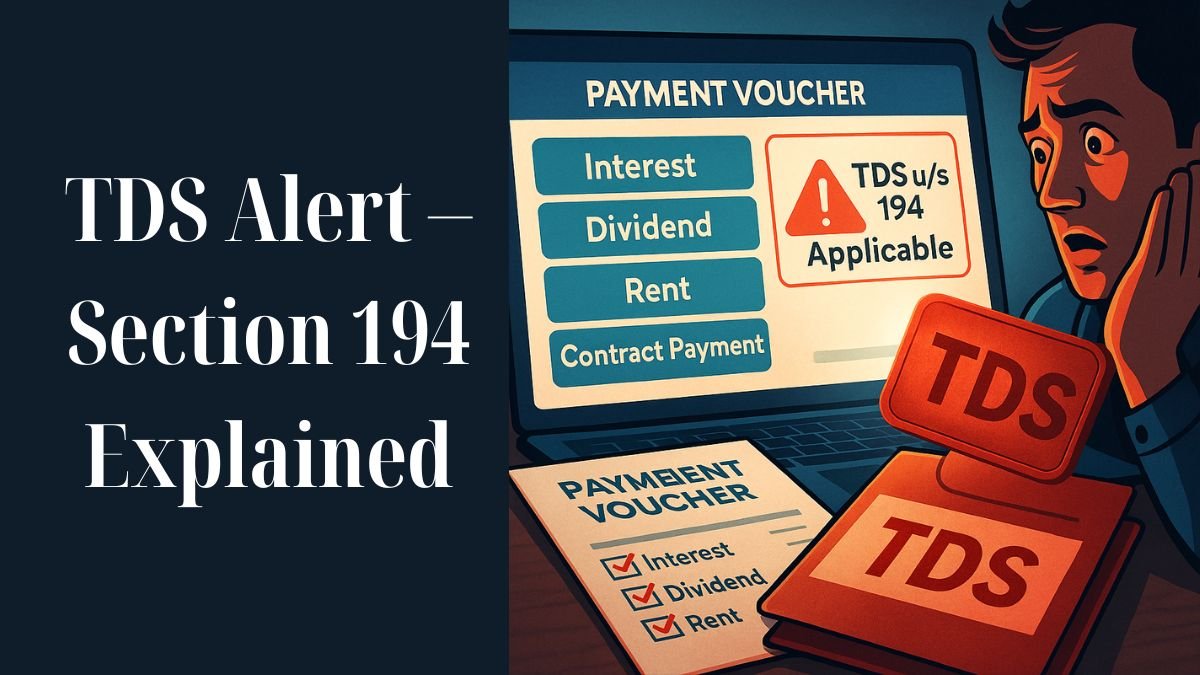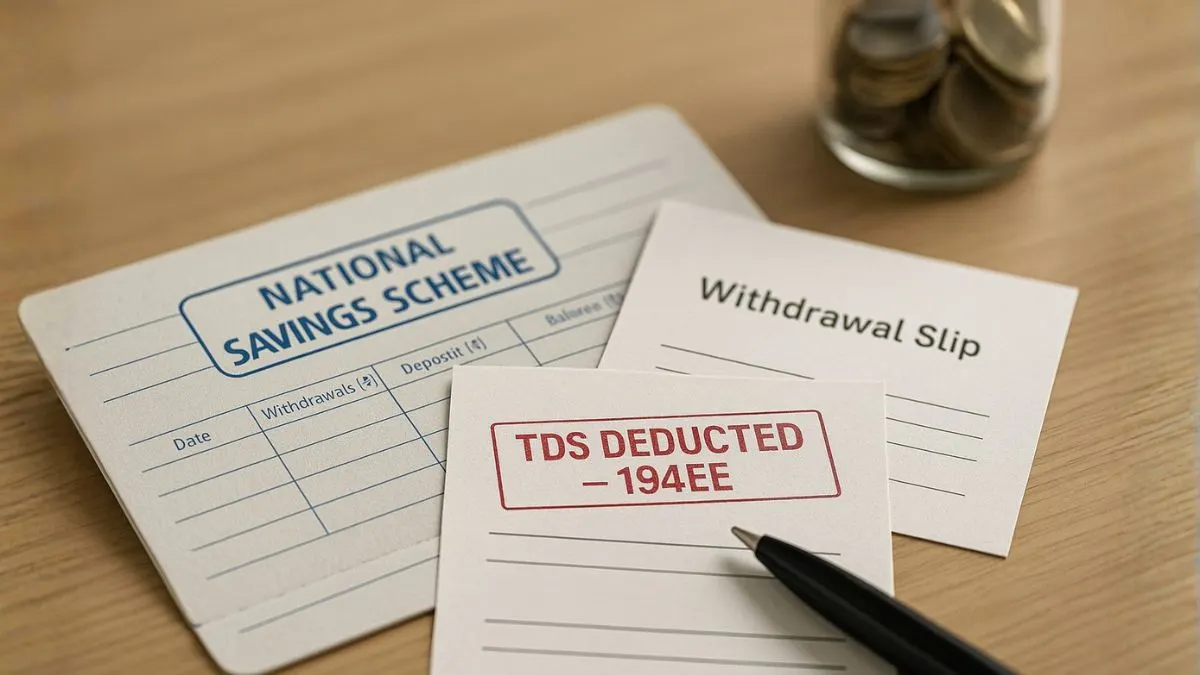
If you're an investor in shares or mutual funds, or a company distributing dividends, it's important to understand Section 194 of the Income Tax Act. This section primarily deals with the Tax Deducted at Source (TDS) on dividend income, which is a crucial aspect of financial compliance for both individuals and corporations.
In this guide, we break down Section 194, explain the TDS rate, limits, applicability, and recent changes you should be aware of.
What Is Section 194 of the Income Tax Act?
Section 194 of the Income Tax Act, 1961, deals with TDS on dividends paid by Indian companies to their shareholders. It provides for the deduction of income tax at source at the rate of 10% when the dividend amount paid exceeds a specified threshold.
So, instead of the shareholder paying tax later, the company deducts it before the payment is made.
This section was amended significantly after Budget 2020, which shifted the tax liability on dividend income from the company to the shareholder.
TDS Rate Under Section 194
As per current rules:
- TDS is deducted at 10% under Section 194
- This rate is applicable when the total dividend income exceeds ₹5,000 in a financial year
- If the PAN is not provided by the shareholder, the TDS rate shoots up to 20%
So, investors need to ensure their PAN is linked and updated with the companies or registrars to avoid higher tax deductions.
Applicability of TDS on Dividend Income
Under Section 194, TDS must be deducted if:
- A domestic company pays dividends to shareholders
- The total dividend exceeds ₹5,000 in a financial year
- The dividend is paid by any mode – cheque, online transfer, or reinvestment
Important to Note:
- TDS is deducted even if a single dividend payment is below ₹5,000, if the total yearly amount exceeds this limit.
- Mutual funds distributing income also follow a similar TDS mechanism under different sections, like Section 194K.
Section 194 vs Section 194T and Section 194A
Let’s look at how Section 194 compares to similar TDS sections:
Section 194T:
Though not widely known, this refers to certain situations involving telecom or digital payments where TDS may be applicable, but it is not the same as Section 194 related to dividends.
Section 194A:
TDS is deducted at a rate of 10% on interest income other than interest on securities under Section 194A. This applies to bank FD interest, NBFC interest, and company interest payouts, and should not be confused with dividend TDS under Section 194.
TDS Threshold and Limits
Here’s a summary of TDS thresholds under Section 194 of the Income Tax Act:
|
Category |
TDS Applicable |
TDS Rate |
|
Dividend ≤ ₹5,000 |
No TDS |
0% |
|
Dividend > ₹5,000 (PAN given) |
Yes |
10% |
|
Dividend > ₹5,000 (No PAN) |
Yes |
20% |
This makes it essential for both the payer (company) and payee (shareholder) to maintain proper PAN records and tally dividend income.
Example of TDS Under Section 194
Imagine you receive the following dividends in a financial year:
- ₹3,000 from Company A
- ₹2,500 from Company B
Your total dividend income is ₹5,500, which exceeds the ₹5,000 threshold. As a result:
- Company B or A (whichever payment is made after the ₹5,000 mark is reached) will deduct 10% TDS
- This would be ₹550 on ₹5,500
Make sure to reconcile these TDS deductions when filing your ITR.
What Happens If TDS Is Not Deducted?
If a company fails to deduct TDS on dividends:
- It can be treated as a default under the Income Tax Act
- The company may face interest, penalties, and prosecution
- The shareholder may also have to pay tax on dividend income if TDS isn’t correctly reflected in Form 26AS
Hence, compliance is crucial for both sides.
Section 194 of the Income Tax Act PDF and Bare Act
If you're looking for legal text or reference material:
- You can access Section 194 of the Income Tax Act PDF on the Income Tax India website
- You may also search for the bare act, which contains the raw legal language without interpretation, ideal for tax professionals and students
There are versions available in Hindi as well for regional accessibility.
Common Questions
- Is TDS applicable if I’m receiving dividends in my bank?
Yes, TDS under Section 194 is applicable regardless of payment mode.
-
Do I need to include this dividend in my ITR?
Yes, dividend income is taxable, and you can claim TDS credit under Form 26AS during ITR filing.
-
Is the ₹5,000 limit applicable per company or total?
The ₹5,000 limit is per company, so TDS is applicable only when the payment by a particular company exceeds ₹5,000.
Final Thoughts
If you’re investing in stocks or mutual funds, it’s essential to understand the TDS implications. Section 194 of the Income Tax Act simplifies tax collection by ensuring companies deduct TDS on dividend income declared, and you remain tax compliant.
Let’s recap:
- TDS must be deducted at 10% if the receiving shareholder's total dividend income for the year is more than ₹5000
- Section 194 provides TDS on dividend income declared
- It provides for deduction of income tax at source at the rate of 10%, or 20% if no PAN
- It differs from Section 194A (interest) and 194T
- Don’t forget to reconcile TDS in your ITR!
👉 Need help understanding TDS or filing your income tax return?
Visit www.callmyca.com for expert tax consultation and end-to-end assistance.











